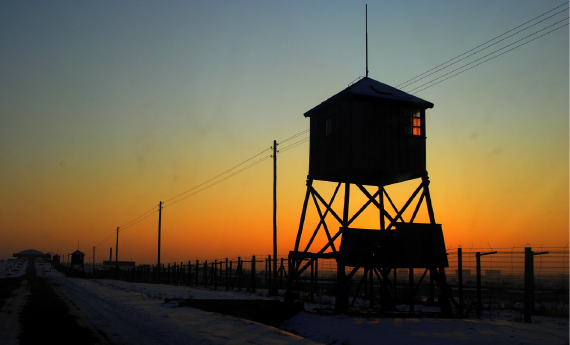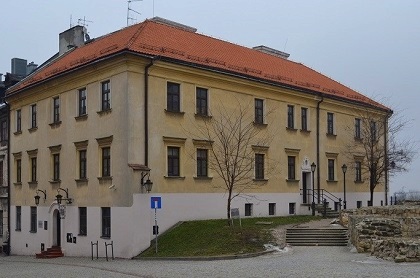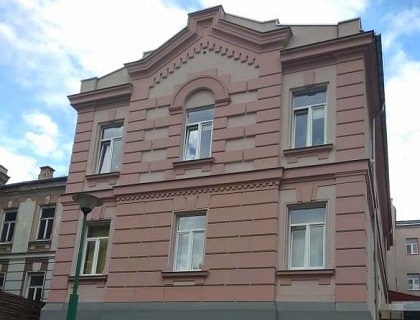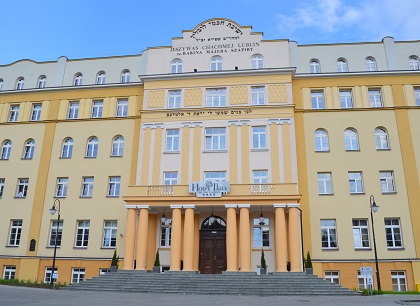Judaica

The German concentration camp under the name Konzentrationslager Lublin (KL Lublin), commonly called Majdanek, was created by the decision of Heinrich Himmler. It was designed to be a reservoir of free labor for the development of the Nazi empire in the East. It was located just behind the south-east outskirts of Lublin, by the road leading to Zamość and Lviv, in the village of Majdan Tatarski. It covered an area of 270 ha. ...

The building was erected in the 19th century. The owners were Berek Cygelman, and Szlema and Frajda Goldsobel. In 1905, part of the building was handed over to the Lublin Jewish Charity Society. The synagogue was then called Beschamedresz de Nosym. Before World War II, one floor of the the tenement belonged to the Jewish community, and the rest belonged to the Halberberg and Szwer families. The synagogue operated until 1939. ...

In the past, the gate guarded the passage in the defensive city walls. It was also a link between the "Christian city" and the no longer existing "Jewish city", which is why it was often referred to as the "Jewish gate". ...

On the stone obelisk at Castle Square there is a plaque showing the plan of the former Jewish quarter. Its main axis was centrally located Szeroka Street, which led along the current Castle Square. It was the most representative part of the Jewish quarter, with synagogues and impressive tenements located by it. Every day, apart from the Sabbath, shops were open, workshops operated, passers by dealt with their affairs, children played in the streets, in the courtyards, and went to cheders. ...

At Grodzka 11 street is the building of the former rectory of the no longer existing parish church. After 1870, it housed the offices of the Jewish religious community and the orphanage for Jewish children and the elderly, the so called "shelter". ...

The building at Noworybna 3 street was the seat of the Central Committee of Polish Jews in Lublin. The committee operated from October 1944 to February 1945. Its main task was to help the Jews who survived from extermination, the hiding ones, and those coming out of hiding. ...

The former I.L. Perec Community Centre is located at the junction of Czwartek and Szkolna streets. The construction of the Perec centre began in 1936. It was supposed to serve as the centre of secular Jewish life in Lublin, but its solemn opening - scheduled for September 1, 1939 - did not take place due to the outbreak of World War II. After the liberation of Lublin, the building became the centre of the reviving social and cultural life of the Jews returning to the city. ...

The largest synagogue in Lublin stood at the foot of the north side of the Castle Hill, where the Tysiąclecia Avenue currently runs. The Maharshal Synagogue, also known as the Great Synagogue, was built in 1567. It was named after rabbi Szlomo Luria, nicknamed Maharshal-Szul. Soon another, smaller Maharam synagogue and the little synagogue Szywe Kryjem were added to it. In total, over 3000 of people could pray here at once. ...

In the buildings at Lubartowska 81 Street, a Jewish hospital functioned between the years 1886-1942. One of the notable heads of the hospital was Marek Arnsztajn - husband of the outstanding poet Franciszka Arnsztajnowa. In March 1942, during the liquidation of the ghetto, the Nazis murdered the patients and the staff. ...

Majer Szapiro announced his intention to build a modern rabbinical school in Lublin during the World Jewish Congress in Vienna in 1923. Szapiro believed that Lublin, called the Jerusalem of the Polish Kingdom, would be the perfect place for this type of initiative. A famous Yeshiva existed here in the 16th century, eminent Talmudic scholars such as Salomon Luria and Szalomon Szachna had lived here. Lublin was also perceived as one of the main centers of Hasidism in Poland. The once famous tzaddik Yaakov Yitzchak Horowitz, known as the Seer of Lublin, had lived here as well. ...
Page 1 of 2













